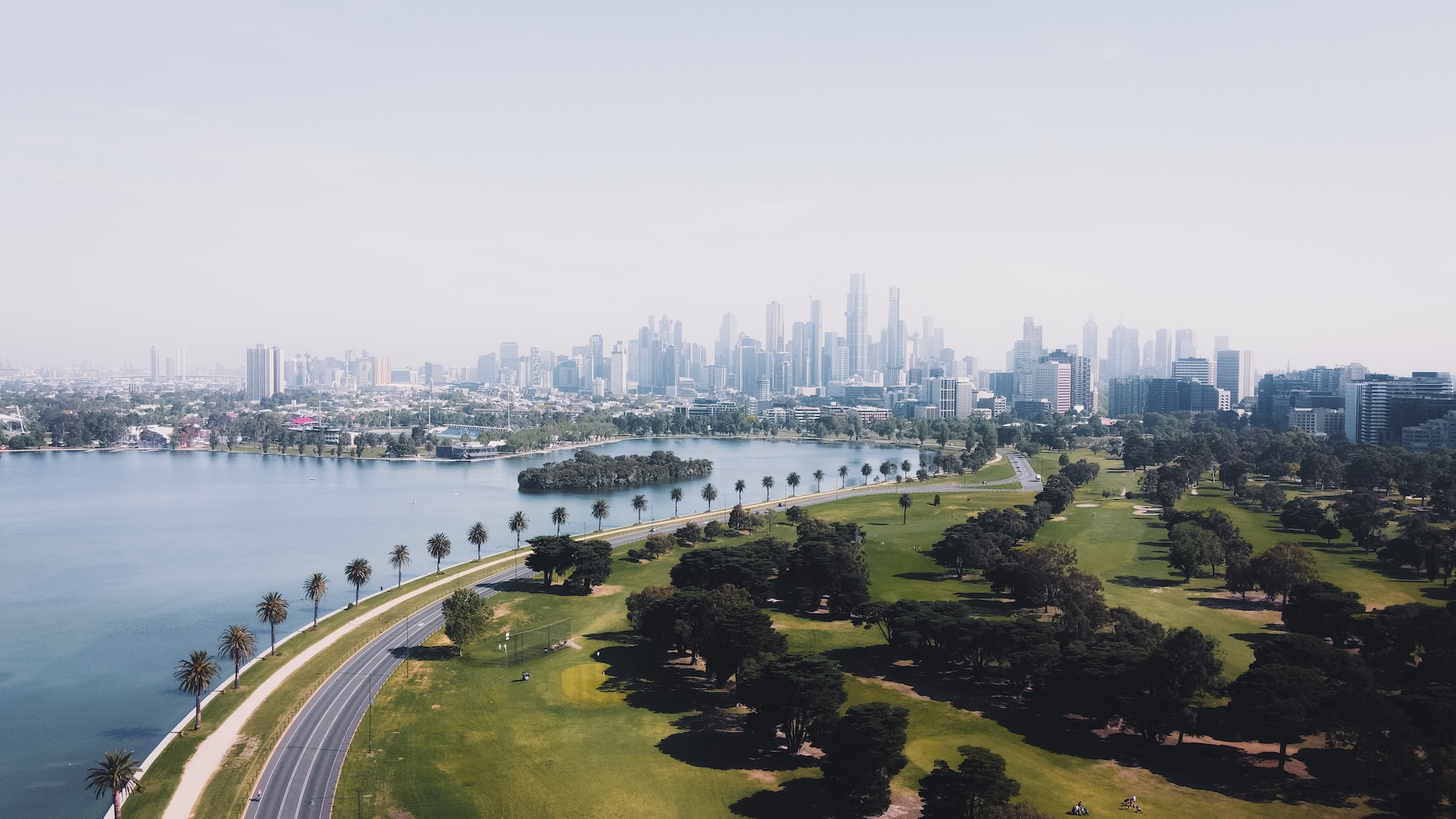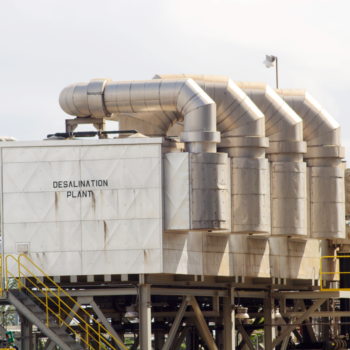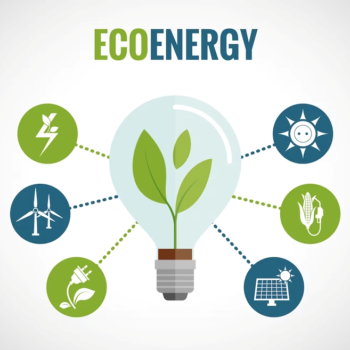|
|
In an era where climate change is a looming crisis, the race to become green has never been more crucial, especially since it’s expected that, by 2050, two-thirds of the global population will live in cities.
As urban populations continue to grow, many cities are taking bold steps towards sustainable living, creating inspiring examples for others to follow. The shift is not just a trend — it represents a vital change in our approach to preserving our planet’s health.
The greenness of a city can be assessed based on various factors such as carbon footprint, recycling programs, use of renewable energy sources, and the availability of green spaces. The concept of green cities goes beyond mere aesthetics; it involves making conscious decisions to create urban environments that are eco-friendly and sustainable.
This article takes you on a journey through the 15 greenest cities in the world, each setting unique precedents in their quest for sustainability. Read on to discover these exceptional cities and learn from their invaluable experiences.
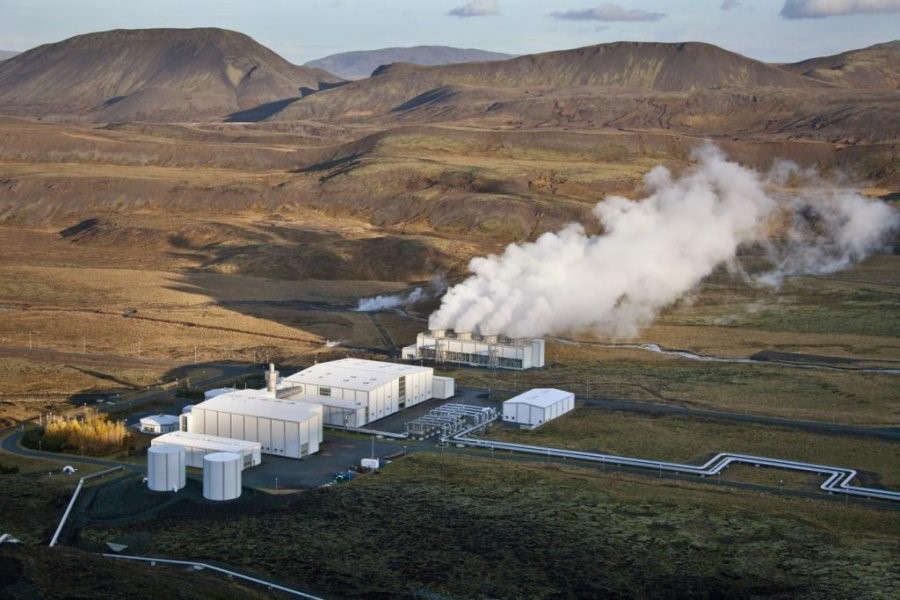
1. Reykjavik, Iceland: Harnessing Geothermal Power
Reykjavik, the capital of Iceland, has emerged as a global leader in terms of renewable energy, specifically when it comes to harnessing geothermal power. The city’s geographical location atop a volcanic hotspot provides abundant access to geothermal energy. This natural advantage is well-utilized by the city through an extensive network of geothermal heating systems.
Nearly 90% of Reykjavik’s homes and buildings are heated by this renewable source, making it one of the few cities globally that can claim such a significant reliance on green energy. The city’s use of geothermal power extends beyond heating; it is also used to generate electricity, further reducing Reykjavik’s carbon footprint.
By tapping into the heart of the earth for power, Reykjavik has largely eliminated its reliance on fossil fuels for heat and electricity. This sustainable approach to energy usage sets a compelling example for cities worldwide. It demonstrates that with proper infrastructure and resource management, renewable energy can provide a practical and effective solution for urban areas aiming to become greener and more sustainable.
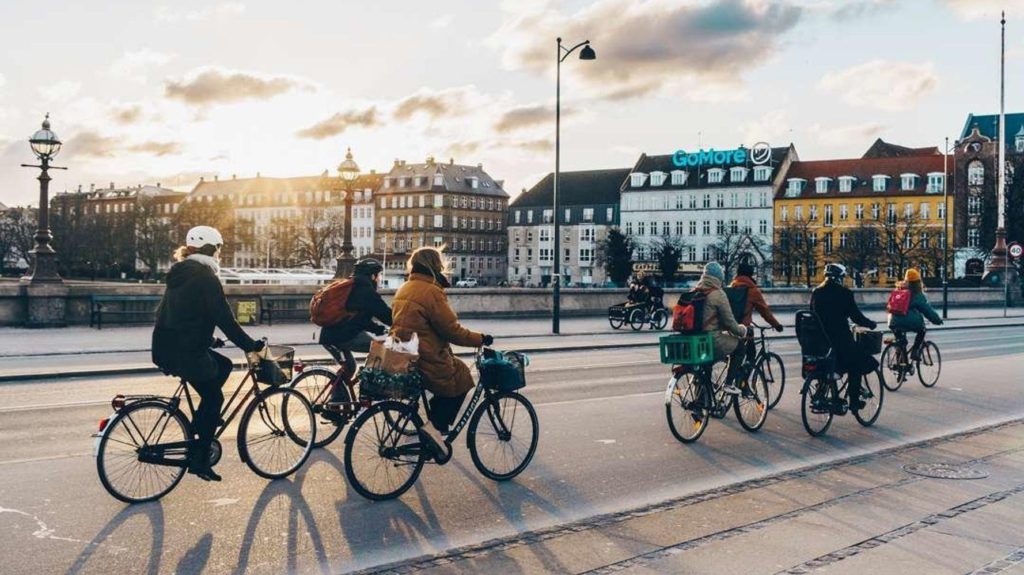
2. Copenhagen, Denmark: Setting the Bar for Cycling Infrastructure
Copenhagen has set a global benchmark for cycling infrastructure. The city is well-known for its extensive and well-integrated network of cycle paths, making it one of the most bike-friendly cities in the world. More than half of Copenhagen’s residents use bicycles daily for commuting, which is facilitated by over 350 kilometers of dedicated bike lanes and numerous bike-friendly amenities.
This culture of cycling is not just a lifestyle trend but a strategic approach to sustainable urban development. By encouraging bicycle usage, Copenhagen successfully reduces traffic congestion, lowers greenhouse gas emissions, and improves the overall health and well-being of its citizens.
Moreover, Copenhagen continues to innovate in this area, implementing new measures like green wave technology for cyclists — synchronizing traffic lights to create a continuous flow of bike traffic during rush hour. This commitment to improving and evolving cycling infrastructure ensures that the city remains at the forefront of sustainable urban living.
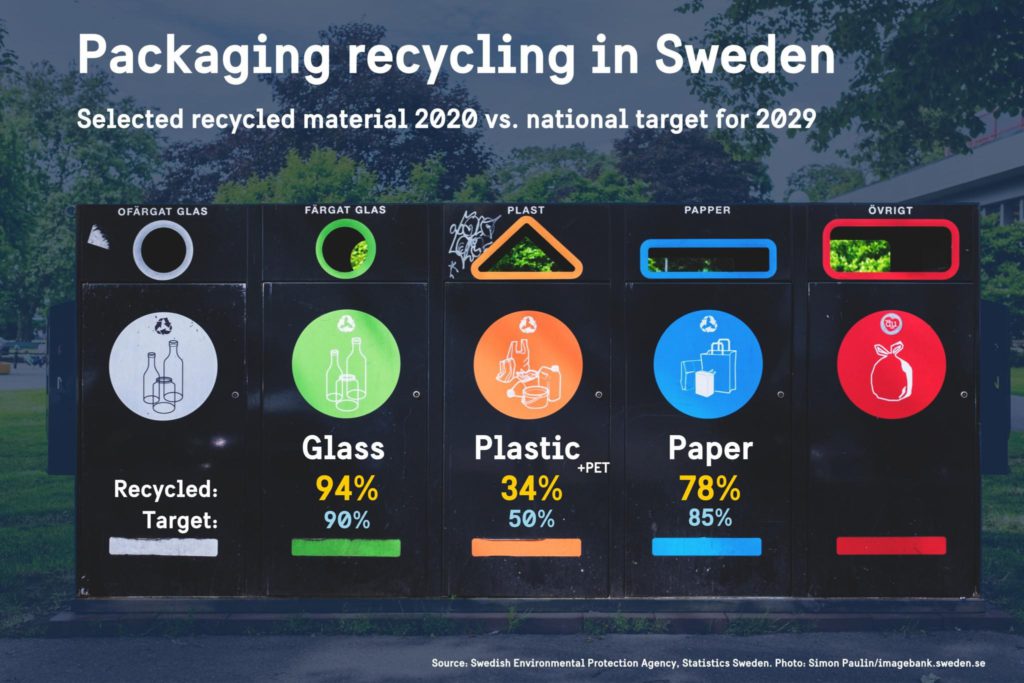
3. Stockholm, Sweden: Pioneering Waste Management Systems
Stockholm, Sweden’s capital, has earned its place as a pioneer in innovative waste management systems. The city’s approach to waste is impressively holistic, with a strong focus on reducing, reusing, and recycling. In fact, Stockholm has been so successful in its waste management strategies that it imports more than 2.5 million tons of waste from other countries to keep its recycling plants operational.
The city’s advanced waste-to-energy program plays a key role in this success. This system converts non-recyclable waste into energy, generating heat and electricity for thousands of Stockholm homes. By transforming what would typically be considered trash into a valuable resource, Stockholm not only reduces the amount of waste sent to landfills but also decreases its reliance on fossil fuels.
Moreover, Stockholm has implemented an effective recycling scheme that encourages residents to separate their waste at home. Color-coded disposal sites make it easy for citizens to recycle different types of materials, increasing the overall rate of recycled waste.
Through these initiatives, Stockholm has demonstrated that an efficient and sustainable waste management system is an achievable goal for urban areas. It sets a great example for cities worldwide and underscores the potential of treating waste as a valuable resource rather than simply discarding it.
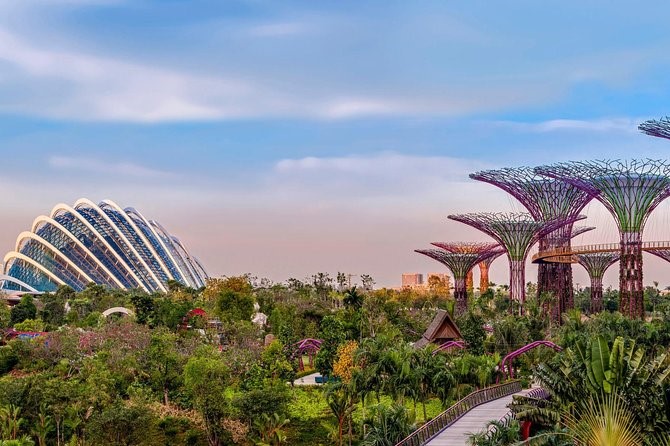
Image source. Singapore’s Gardens by the Bay.
4. Singapore: A Model of Urban Greenery
Despite its dense urban environment, Singapore stands as a shining example of how cities can effectively integrate greenery into their landscape. Known as the “Garden City,” Singapore exemplifies a successful blend of urban development and nature preservation. Its commitment to this vision is evident in its city planning and architecture, which often incorporate elements of nature.
The city-state’s “City in a Garden” initiative aims to transform Singapore from a garden city to a city in a garden. This initiative is not just about adding more parks — but also about integrating greenery into all aspects of urban life, from residential areas to commercial buildings.
One notable example of this initiative is the Gardens by the Bay, a nature park spanning 101 hectares that features supertrees — vertical gardens acting as cooling ducts for nearby conservatories — and bio-diverse conservatories. Moreover, the government encourages the construction of green buildings and rooftops, providing incentives for developers who adopt eco-friendly design principles.
Singapore’s commitment to urban greenery is not just about aesthetics; it’s about creating healthier, more sustainable living environments. The abundant green spaces help to mitigate heat island effects, absorb carbon emissions, and enhance overall biodiversity.
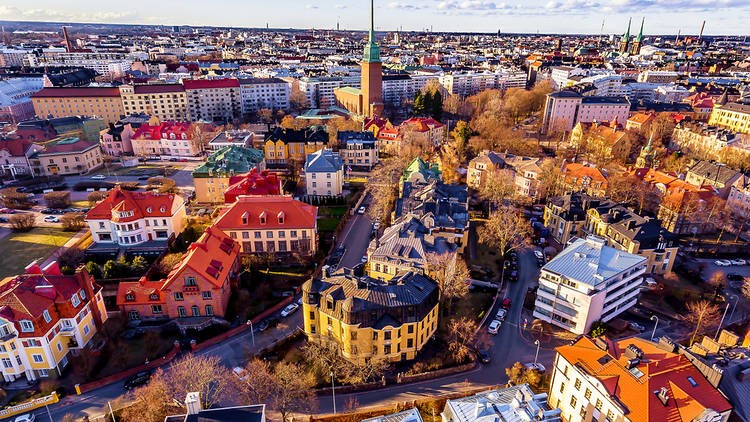
5. Helsinki, Finland: Leading in Clean Energy
Helsinki, Finland’s capital and largest city is a global leader when it comes to clean energy. The city is committed to achieving carbon neutrality by 2035 and has already made significant strides toward this ambitious goal.
The key to Helsinki’s transformation lies in its comprehensive approach, which includes increasing the use of renewable energy sources and improving energy efficiency. Renewable energy, including wind, solar, and geothermal power, now plays a pivotal role in the city’s energy mix.
In addition to harnessing renewable energy sources, Helsinki also emphasizes increasing energy efficiency. The city promotes the use of energy-efficient appliances and lighting, as well as the implementation of smart grid technologies. These measures not only reduce overall energy consumption but also help to minimize greenhouse gas emissions.
Moreover, the city has embarked on an innovative project to decarbonize its district heating system. The aim is to replace coal with more sustainable alternatives like biofuels and waste heat from data centers.
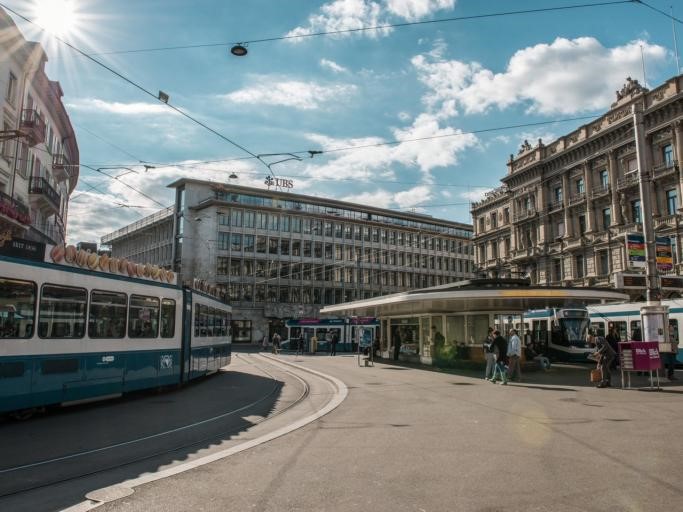
6. Zurich, Switzerland: Mastering Sustainable Mobility
Zurich has become a model for sustainable mobility. Known for its efficient and reliable public transport system, Zurich has successfully managed to reduce individual car use and promote more sustainable modes of transportation.
The city’s comprehensive public transport network consists of trams, buses, trains, and boats that are all regularly scheduled and well-coordinated. This efficiency makes public transportation a convenient and viable option for daily commuting, reducing the need for private cars.
In addition to an extensive public transport system, Zurich also supports cycling and walking. The city boasts a vast network of bicycle lanes and pedestrian-friendly streets, encouraging residents to adopt these healthier and greener modes of transportation.
Furthermore, Zurich is continually exploring innovative solutions to enhance its sustainable mobility. For instance, the city is testing electric buses and has implemented a successful car-sharing program. These initiatives contribute to reducing greenhouse gas emissions and decreasing traffic congestion in the city.
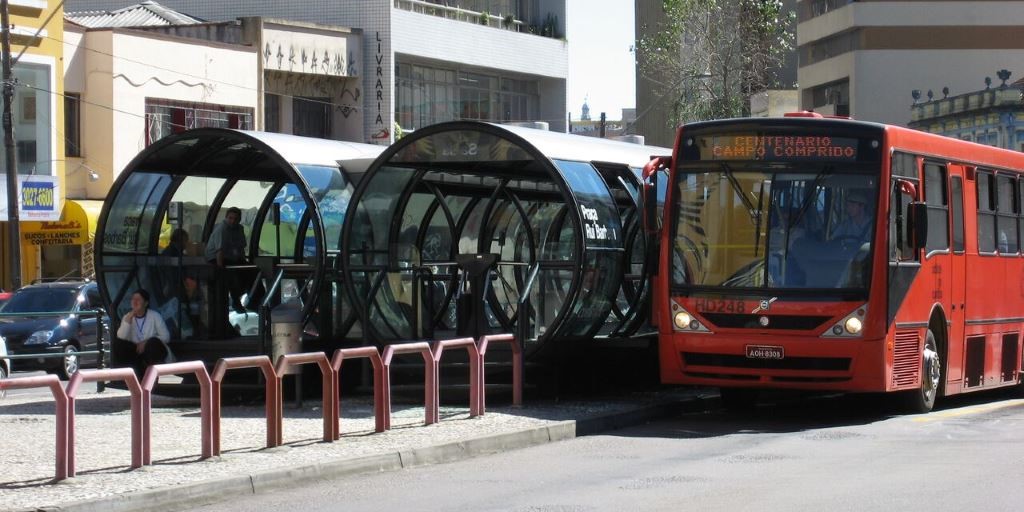
7. Curitiba, Brazil: Revolutionizing Public Transport
Curitiba, the capital of Brazil’s Paraná state, is widely recognized for revolutionizing public transport. The city’s innovative Bus Rapid Transit (BRT) system, launched in the 1970s, has been a game-changer, offering an efficient and affordable alternative to private vehicle use.
The BRT system operates on dedicated bus lanes, ensuring fast and reliable service unaffected by general road traffic. Buses run at high frequency, reducing waiting times and making public transportation an attractive option for commuters. This system is complemented by an effective urban planning strategy that promotes high-density development along transit routes, making public transport accessible to a large portion of the population.
Additionally, Curitiba has implemented unique features like tube stations — raised platforms that provide level boarding, similar to a subway system — to improve the efficiency of passenger loading and offloading. The city also offers integrated fare systems allowing passengers to transfer between buses without additional charges.
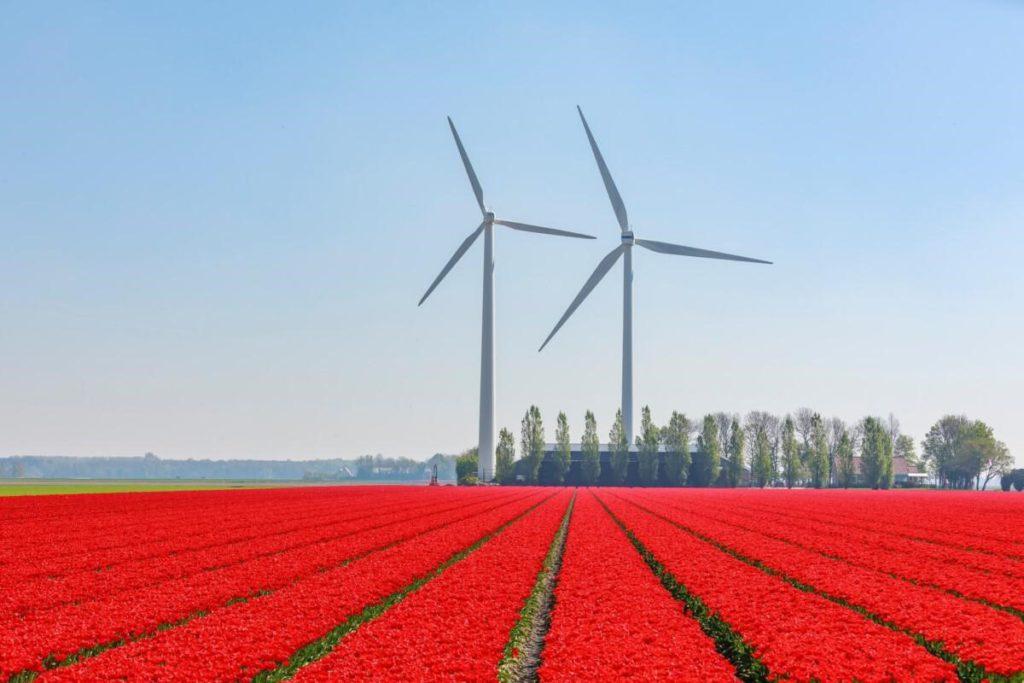
8. Amsterdam, Netherlands: Pushing Boundaries in Renewable Energy
Amsterdam is pushing boundaries in its commitment to renewable energy. The city’s progressive approach towards sustainability is evident in its ambitious goal to become carbon-neutral by 2050. To reach this target, Amsterdam is making significant investments in renewable energy infrastructure and initiatives.
One of the central pillars of Amsterdam’s renewable energy strategy is wind power. The city plans to substantially increase its wind turbine installations, with numerous new projects currently underway. Additionally, Amsterdam is harnessing the potential of solar energy by encouraging homeowners, businesses, and even schools to install solar panels.
Aside from these more traditional forms of renewable energy, Amsterdam is also exploring innovative solutions like city-wide heating networks that recycle industrial waste heat. Furthermore, the city is investing in electric mobility with charging stations for electric cars spread throughout the city.
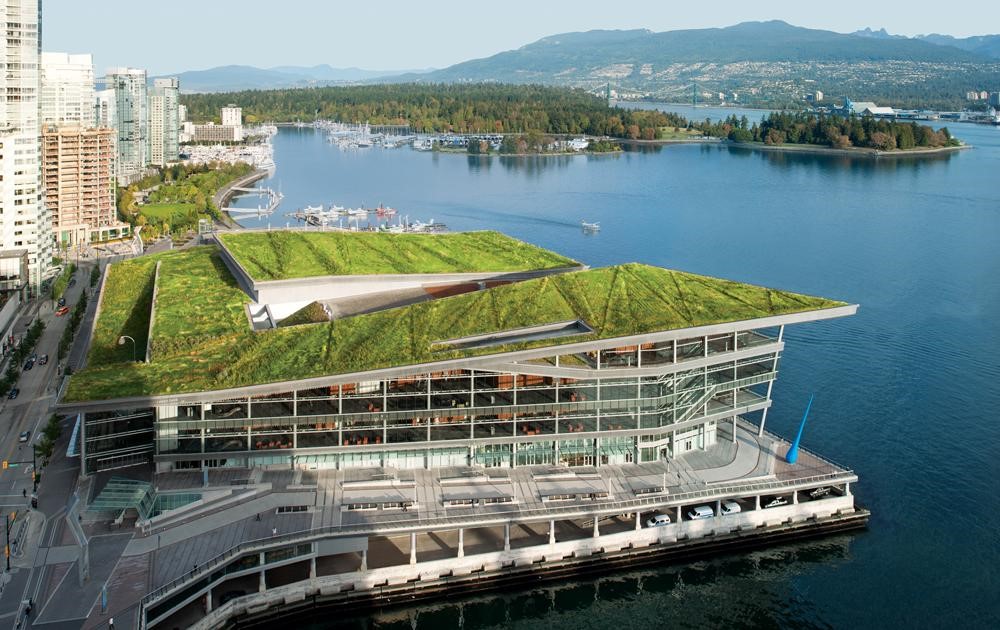
9. Vancouver: Canada’s Eco-friendly Star
Vancouver, nestled between the Pacific Ocean and the Coast Mountains, is Canada’s eco-friendly star. Recognized globally for its commitment to environmental sustainability, Vancouver has undertaken a series of initiatives to become the world’s greenest city.
Central to this ambition was the Greenest City 2020 Action Plan, a comprehensive strategy outlining Vancouver’s commitment to tackle environmental challenges across ten areas, including carbon emissions, waste, and ecosystem health. As part of this plan, Vancouver actively encouraged green building practices. The city has implemented stringent energy efficiency standards for new constructions and promotes retrofitting existing buildings to improve their energy performance.
In addition to green construction practices, Vancouver has taken significant steps toward promoting clean energy. The city aims to derive 100% of its energy from renewable sources before 2050. With an increasing number of homes and businesses powered by renewable electricity, Vancouver is steadily moving towards this goal.
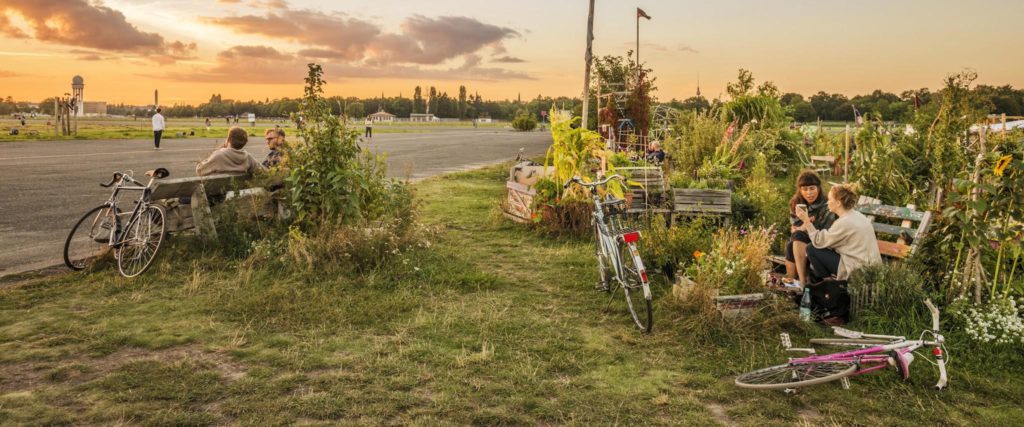
10. Berlin, Germany: Cultivating Urban Farming
Berlin, Germany’s vibrant capital, is making significant strides in cultivating urban farming. Amid its bustling urban landscape, the city has created spaces for community gardens and urban farms. This innovative approach not only greenifies the city but also fosters community involvement and promotes sustainable food production.
Across Berlin, numerous community gardens have sprung up on previously vacant lots and rooftops. These green spaces not only provide fresh produce but also serve as community hubs where residents can connect and learn about sustainable agriculture. Some of these projects even offer workshops and educational programs on gardening and food production.
In addition to community gardens, several larger urban farms operate within the city. These farms employ sustainable farming techniques such as organic cultivation, permaculture practices, and aquaponics systems. They supply locally grown, fresh produce to restaurants and markets in the city, reducing food miles and promoting local economies.
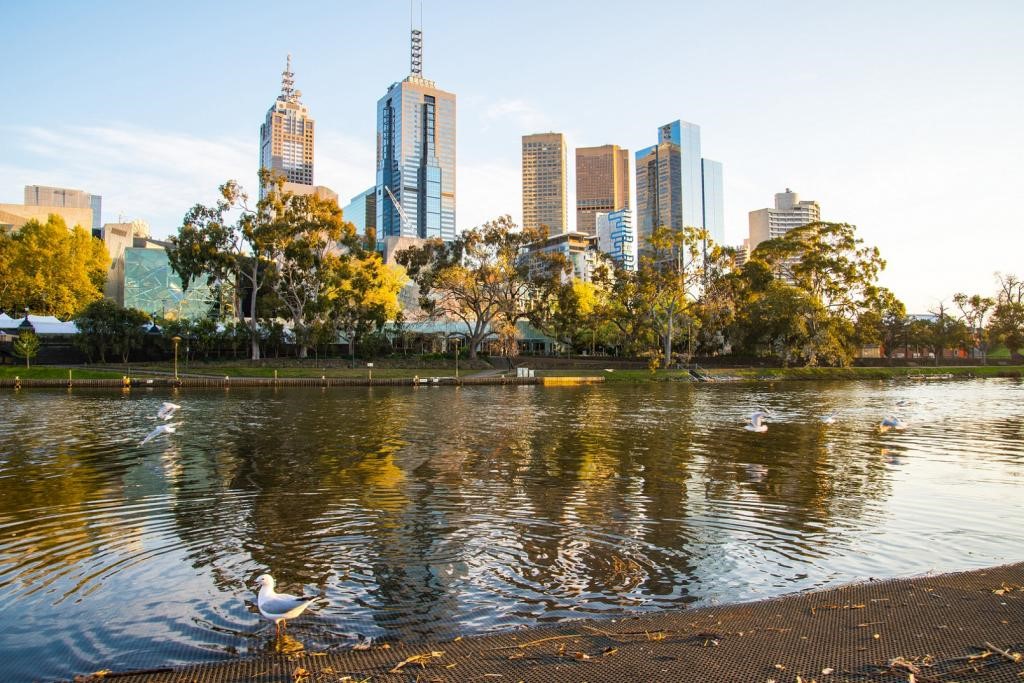
11. Melbourne, Australia: Leveraging Water Conservation Techniques
Melbourne, Australia’s second-largest city, is leveraging water conservation techniques to ensure sustainable urban living. As the city grapples with the effects of climate change, including prolonged periods of drought, it has implemented a range of measures to efficiently use and preserve its water resources.
One key aspect of Melbourne’s approach is the promotion of water-efficient appliances and fixtures in homes and businesses. The city also encourages rainwater harvesting by providing rebates for residents who install rainwater tanks. These initiatives not only reduce demand on municipal water supply but also lower household water bills.
Additionally, Melbourne has adopted water-sensitive urban design principles in its city planning. This entails designing urban spaces such that they capture and utilize stormwater, thereby reducing runoff and pollution while replenishing groundwater supplies. Examples include green roofs that absorb rainwater, permeable pavements, and constructed wetlands.

12. Oslo, Norway: Championing Electric Mobility
In an effort to reduce 95% of its carbon emissions by 2030, Oslo has implemented a range of policies and infrastructure developments to encourage the adoption of electric vehicles (EVs), setting a global example for sustainable urban transport.
As part of its strategy, Oslo provides numerous incentives for EV owners. These include exemptions from some taxes, access to bus lanes, free parking in municipal spots, and free charging at public charging stations. Such incentives make owning and operating EVs more attractive and affordable for residents.
Furthermore, Oslo has invested heavily in charging infrastructure. The city boasts one of the highest numbers of charging points per capita globally, ensuring EV owners have easy access to charging facilities.
The result of these efforts is evident; Oslo has the highest per-capita number of electric cars in the world. This shift towards electric mobility plays a significant role in reducing local air pollution and contributes to Norway’s goal of becoming carbon neutral in the nearest future.
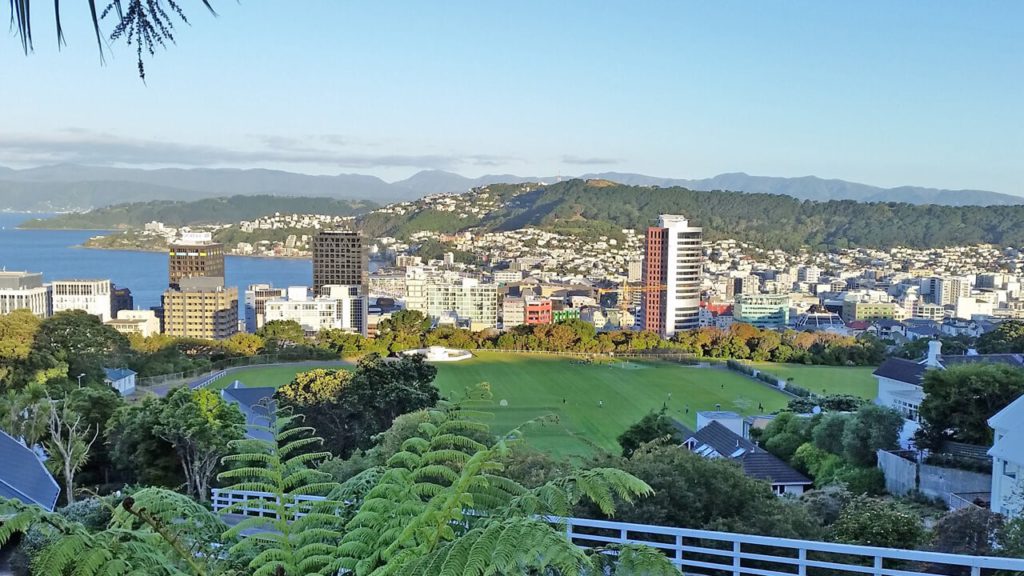
13. Wellington: New Zealand’s Green Capital
Wellington is gaining recognition as a green capital due to its commitment to sustainability and environmental protection. Nestled among hills and overlooking a stunning harbor, the city has embraced its natural surroundings and adopted various initiatives to maintain its eco-friendly status.
A crucial aspect of Wellington’s green strategy is its emphasis on preserving natural habitats and biodiversity. The city is surrounded by an extensive network of reserves and parks, which are home to a variety of native plants and animals. Wellington has undertaken numerous conservation projects intended to protect these areas and their inhabitants.
The city also encourages sustainable transportation. It boasts an efficient public transport system that includes buses, trains, and even cable cars. Furthermore, Wellington has invested in cycling infrastructure and walking paths, promoting active modes of transportation that contribute to lower carbon emissions.
In terms of energy use, Wellington is making strides towards becoming more sustainable. The city has set a goal to become carbon neutral by 2050, with plans underway to increase renewable energy generation and improve energy efficiency in buildings.
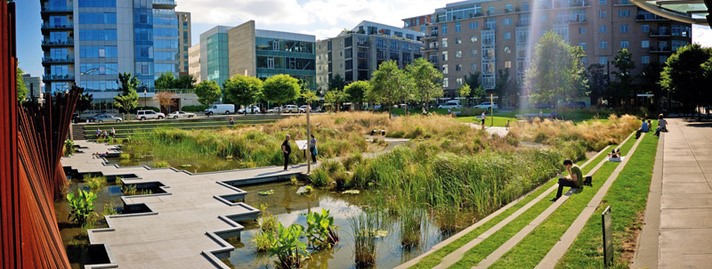
14. Portland, Oregon, the USA: Sustainable Living Made Easy
Portland, located in the Pacific Northwest of the United States, has made sustainable living an integral part of its identity. Known for its eco-friendly ethos and practices, Portland consistently ranks among the greenest cities in the U.S. and serves as a model for sustainable urban living.
One of Portland’s defining sustainability features is its comprehensive public transit system. The city boasts an extensive network of light rail, buses, and streetcars. Additionally, Portland has invested heavily in cycling infrastructure, providing over 385 miles of bikeways that encourage residents to opt for this carbon-free mode of transport.
Portland’s commitment to sustainability also extends to energy use. The city aims to meet 100% of community-wide energy needs with renewable energy by 2050. To reach this ambitious goal, Portland promotes renewable energy sources and encourages energy-efficient building designs.
Moreover, Portland is renowned for its green spaces. With over 12,000 acres of public parks and natural areas, the city offers abundant opportunities for residents to connect with nature without leaving city limits.
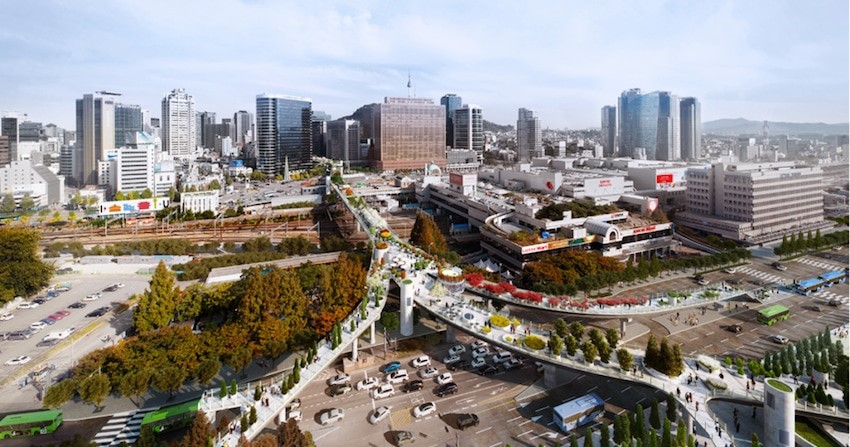
Image source. Seoullo 7017.
15. Seoul: South Korea’s Eco-Innovation Hub
Seoul, the dynamic capital of South Korea, is transforming itself into an eco-innovation hub. Stepping up to environmental challenges, the city has adopted a range of innovative measures to reduce its carbon footprint and enhance sustainability.
Central to Seoul’s green initiatives is its commitment to energy efficiency and renewable energy. The city’s “One Less Nuclear Power Plant” initiative aims to reduce energy consumption equivalent to one nuclear power plant by promoting energy conservation and renewable energy use. The initiative has been so successful that it’s now in its second phase, with an even more ambitious target.
Seoul is also making substantial strides in sustainable transportation. It boasts an extensive public transport system that includes buses, subways, and bike-sharing programs. The city is also fostering electric mobility with a growing network of charging stations for electric vehicles.
Moreover, Seoul has made it a priority to increase green spaces within the city. Projects like transforming the elevated highway into Seoullo 7017 Skygarden have enhanced urban biodiversity and residents’ quality of life.
Final Thoughts
The green cities highlighted in this article are testaments to the potential of urban areas to be catalysts for sustainable living. From harnessing renewable energy in Amsterdam and Reykjavik to pioneering waste management in Stockholm and public transportation in Curitiba, these cities are at the forefront of environmental innovation.
They also demonstrate that sustainability doesn’t necessitate a compromise on economic growth or quality of life. Instead, they prove that environmental stewardship can go hand-in-hand with urban development, creating spaces that are not only economically prosperous but also sustainable and livable.
